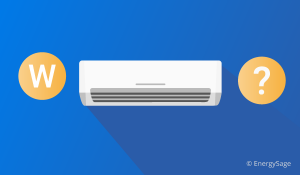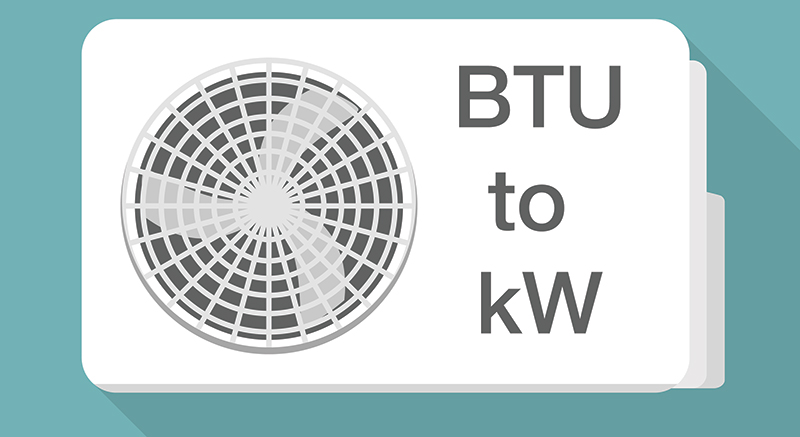How Many kW Does an Air Conditioner Use? A Comprehensive Guide
The Basics of Air Conditioner Power Consumption
Air conditioners are essential appliances that keep us comfortable during hot summer months. However, many homeowners are concerned about their energy consumption and the associated costs. One of the key factors to consider is the power consumption of an air conditioner, which is measured in kilowatts (kW). In this article, we will explore how many kW an air conditioner typically uses and what factors can affect its energy efficiency.
Understanding Air Conditioner Power Ratings
When you purchase an air conditioner, you will come across the term “tonnage,” which refers to the cooling capacity of the unit. Tonnage does not directly indicate the power consumption of the air conditioner. Instead, it represents the amount of heat an air conditioner can remove from a room in one hour. To determine the kW rating of an air conditioner, you need to consider its tonnage and the energy efficiency ratio (EER) or seasonal energy efficiency ratio (SEER).
The EER or SEER is a ratio that compares the cooling output of an air conditioner to the energy it consumes. The higher the EER or SEER rating, the more energy-efficient the air conditioner. In general, modern air conditioners have higher EER or SEER ratings, resulting in lower power consumption.

Average kW Consumption of Different Air Conditioner Sizes
The power consumption of an air conditioner depends on various factors, including its size, efficiency, usage patterns, and environmental conditions. Here’s a general breakdown of the average kW consumption for different air conditioner sizes:
- Small Air Conditioners (0.75 – 1.5 tons): On average, small air conditioners consume around 0.8 – 1.5 kW per hour.
- Medium Air Conditioners (1.5 – 3 tons): Medium-sized air conditioners typically consume around 1.5 – 3 kW per hour.
- Large Air Conditioners (3 – 5 tons): Large air conditioners can consume around 3 – 5 kW per hour.
Keep in mind that these figures are general estimates, and the actual power consumption may vary depending on the factors mentioned earlier.
Factors Affecting Air Conditioner Power Consumption
While the size and efficiency of an air conditioner play a significant role in determining its power consumption, there are other factors to consider as well. Here are some key factors that can affect an air conditioner’s kW usage:
- Thermostat Settings: Lower thermostat settings require the air conditioner to work harder, resulting in higher power consumption. Setting the temperature a few degrees higher can help reduce energy usage.
- Climate Conditions: Hotter climates require air conditioners to run longer and consume more power. Humidity levels can also affect an air conditioner’s efficiency.
- Insulation and Home Efficiency: Proper insulation and sealing of windows and doors can minimize heat transfer, reducing the workload on the air conditioner and its power consumption.
- Maintenance and Cleanliness: Regular maintenance, including cleaning or replacing air filters, ensures optimal airflow and efficient operation, resulting in lower power consumption.
- Usage Patterns: The frequency and duration of air conditioner usage can impact its overall power consumption. Using energy-saving features, such as programmable timers, can help optimize energy usage. https://jbqualityairconditioning.com.au/
Tips for Improving Air Conditioner Energy Efficiency

To reduce the power consumption of your air conditioner and improve its energy efficiency, consider the following tips:
- Set the thermostat wisely: Adjust your thermostat to a moderate temperature that keeps you comfortable without overworking the air conditioner.
- Maintain proper insulation: Ensure that your home is adequately insulated to prevent heat transfer and keep the cool air inside.
- Keep doors and windows sealed: Seal any gaps or cracks around doors and windows to prevent cool air from escaping and hot air from entering.
- Use ceiling fans: Utilize ceiling fans to circulate air and create a wind-chill effect, allowing you to raise the thermostat temperature without sacrificing comfort.
- Regularly clean or replace air filters: Dirty air filters restrict airflow and force the air conditioner to work harder. Clean or replace the filters as recommended by the manufacturer.
- Schedule professional maintenance: Arrange regular maintenance visits from HVAC professionals to ensure that your air conditioner is running efficiently.
- Consider programmable thermostats: Install programmable thermostats that allow you to automatically adjust temperatures based on your daily schedule.
- Utilize natural shading: Use curtains, blinds, or shades to block direct sunlight and reduce the load on your air conditioner.
- Reduce heat-generating activities: Avoid using heat-generating appliances during the hottest parts of the day, as they increase the workload on your air conditioner.
By implementing these energy-saving practices, you can not only reduce your air conditioner’s power consumption but also lower your energy bills and contribute to a more sustainable environment.
In Conclusion
The power consumption of an air conditioner is measured in kilowatts (kW), and it can vary based on factors such as size, efficiency, climate conditions, and usage patterns. While smaller air conditioners generally consume around 0.8 – 1.5 kW per hour, larger units can consume around 3 – 5 kW per hour.
To optimize energy efficiency and minimize power consumption, it’s important to set your thermostat wisely, maintain proper insulation, seal doors and windows, use ceiling fans, clean or replace air filters regularly, and schedule professional maintenance.
By following these tips and considering the factors that affect air conditioner power consumption, you can create a comfortable living environment while keeping your energy usage in check.


